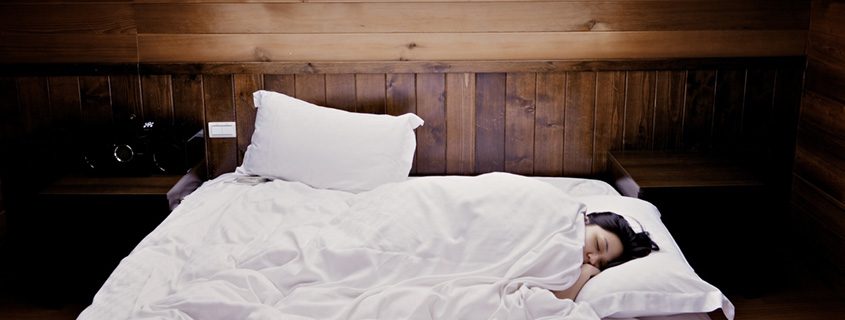Sleep Hygiene and Back Pain
Article Featured on Spine Health Institute
Give Your Spine a Good Night’s Rest
Sleep. It’s one of the most natural and nurturing human activities, and it’s something we all require to keep our minds and bodies functioning properly. But did you know you can actually sleep the WRONG way? Think about the last time you awoke with a stiff neck after lying in an awkward position. Or maybe your back started hurting the second you got up for work. Whether you aggravated an old injury or created a new one, it happened when you weren’t even conscious!
The truth is, each of us can benefit by following certain “sleep strategies” that minimize the pressure on our spinal column while we’re at rest. This starts with learning the proper way to get into and out of bed so as to reduce unnecessary twisting of the spine.
Getting Into Bed
Obviously, if you’re prone to chronic back or neck pain, or if you’re trying to recover from a recent back injury, having a good mattress is a key to your comfort. While mattress shopping isn’t fun – or cheap! – it’s worth knowing what to look for when the time comes. Our Spine U library has a quick video that demonstrates how to choose the best mattress for your back.
That said, even the best mattress can’t keep you from straining a muscle when you’re getting into or out of bed. That’s why we recommend the “log roll” sequence, especially for those just recovering from a back injury. Here’s how it’s done:
- First, sit on the edge of the bed and use your arms to slowly lower your body down onto your side while bringing your legs and feet onto the bed.
- Roll onto your back while keeping your back and hips in line. Avoid twisting your back by tightening your abdominal muscles.
- To get up, slowly roll onto your side and slide your legs off the side of the bed. Be sure to keep your abdominal muscles tight.
- With your elbow and hand, push into the mattress and lift up into a sitting position.
This quick video demonstrates the log roll.
Lying on Your Back
If you typically sleep on your back, learn the correct “supine” position to avoid putting undue stress on parts of your spine.
- Start by completing the log roll sequence to lie down.
- Use a medium-sized pillow under your head to ensure that your body and head are at equal height.
- If needed, place a small pillow in the curve of your lower back for support.
- Place one or two pillows under your knees to keep your spine in a neutral position.
This video demonstrates the proper supine position.
Sleeping on Your Side
If you prefer lying on your side, it’s important to keep your hips and neck in alignment. Here’s how.
- Use the log roll sequence to get into bed.
- Place a medium-sized pillow under your head so your head and body are raised by the same amount.
- If needed, place a small towel roll in the curve of your neck.
- Place a thin- to medium-sized pillow between your knees to help support your lower back.
This video demonstrates the proper side-sleeping technique.
For Stomach Sleepers
In general, it’s not very wise to sleep on your stomach because of the strain that this position puts on your back and neck. But if this is the only way you’re able to sleep, you can reduce the pressure on your spinal column this way.
- Start the logroll sequence and use your arms to lower your body down on your stomach while lifting your legs onto the bed.
- Use a very thin pillow or no pillow under your head to keep your neck in line with your body.
- Place a thin or medium-size pillow under your stomach and pelvic region to help keep your spine in a neutral position.
- Bring one leg to your side and slightly bend it. Place a medium pillow underneath your knee to relieve pressure on your lower back.
Here’s a video that shows the best possible way to sleep on your stomach.
Orthopedic & Sports Medicine Center of Oregon is an award-winning, board-certified orthopedic group located in downtown Portland Oregon. We utilize both surgical and nonsurgical means to treat musculoskeletal trauma, spine diseases, sports injuries, degenerative diseases, infections, tumors and congenital disorders.
Our mission is to return our patients back to pain-free mobility and full strength as quickly and painlessly as possible using both surgical and non-surgical orthopedic procedures.
Our expert physicians provide leading-edge, comprehensive care in the diagnosis and treatment of orthopedic conditions, including total joint replacement and sports medicine. We apply the latest state-of-the-art techniques in order to return our patients to their active lifestyle.
If you’re looking for compassionate, expert orthopedic surgeons in Portland Oregon, contact OSM today.
Phone:
503-224-8399
Address
17355 Lower Boones Ferry Rd Suite 100A
Lake Oswego, OR 97035
Hours
Monday–Friday
8:00am – 4:30pm



